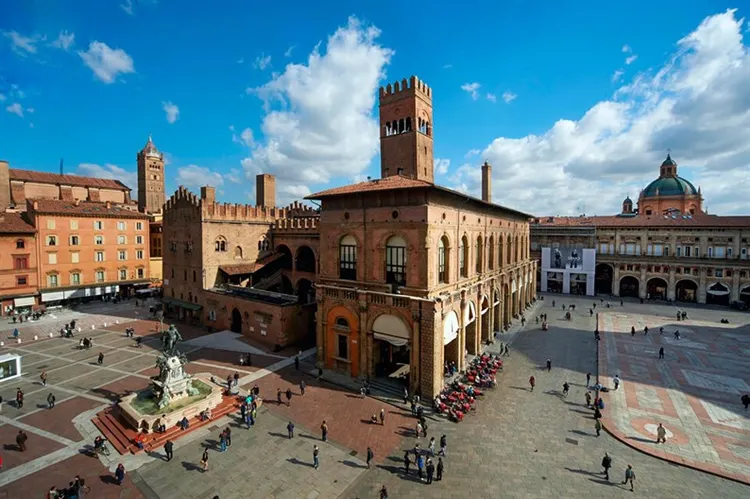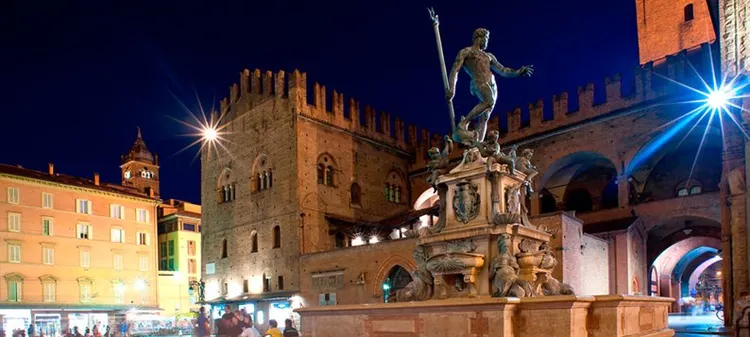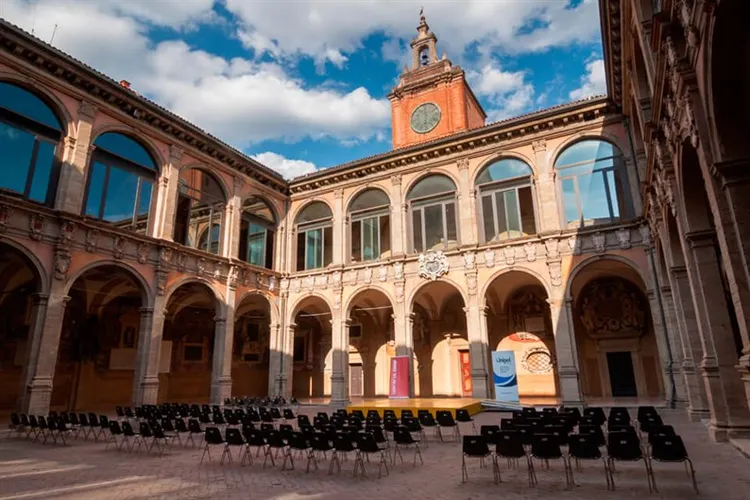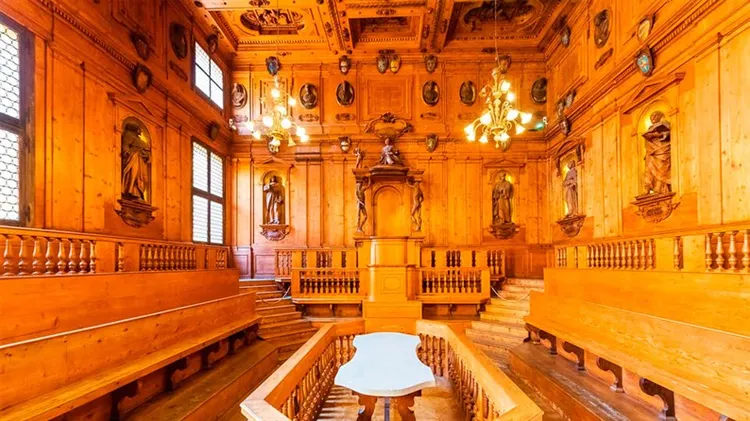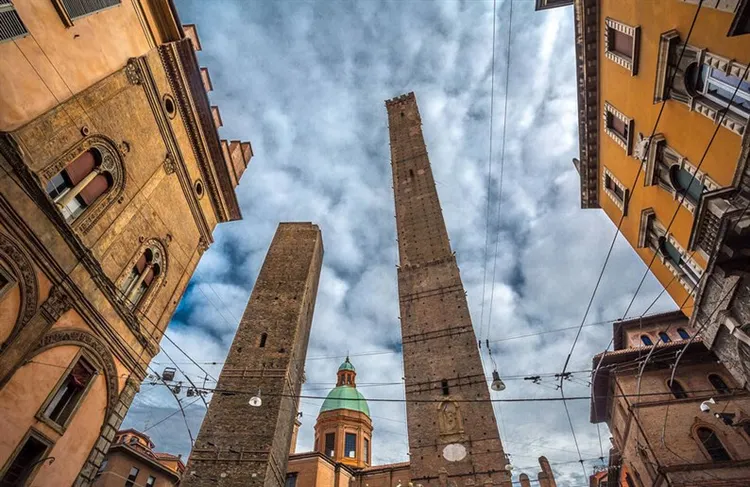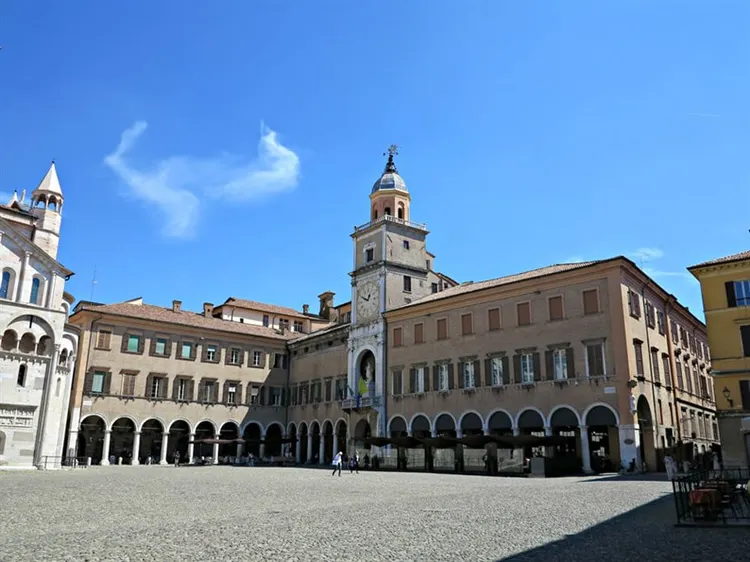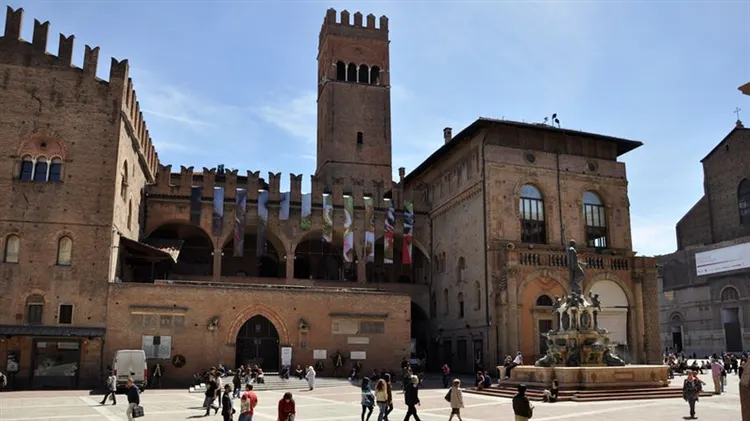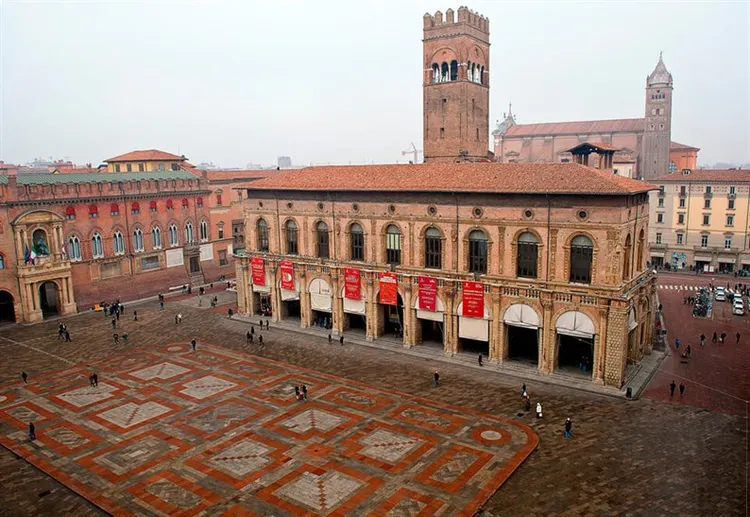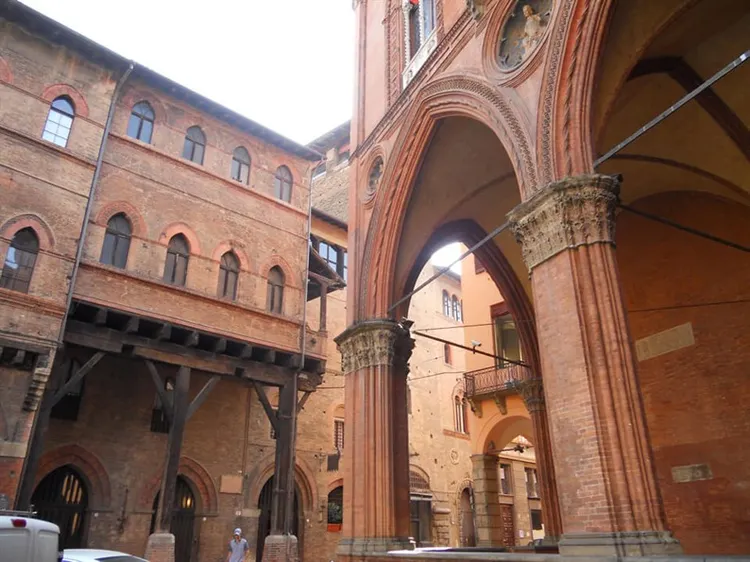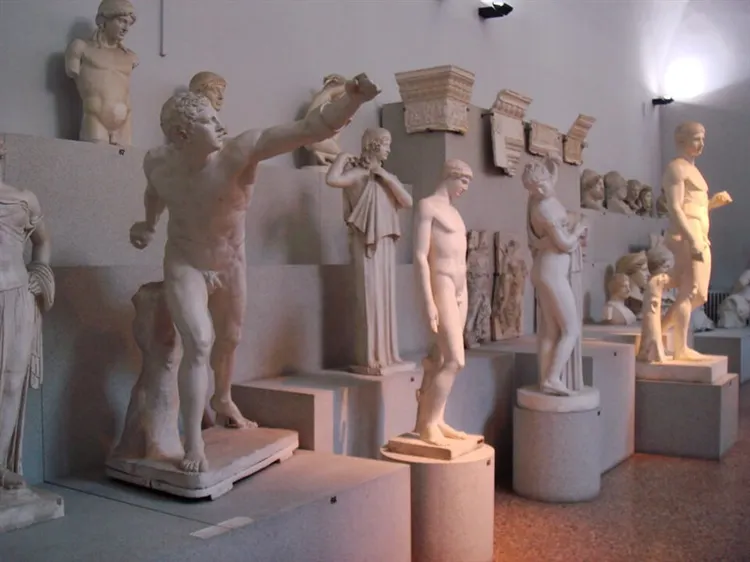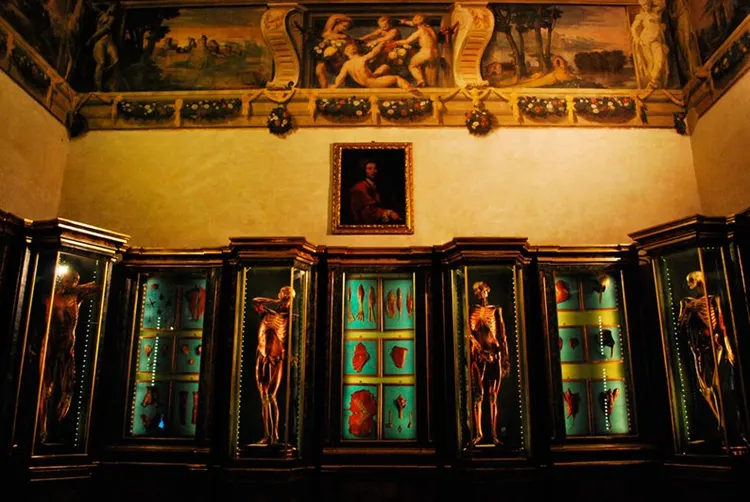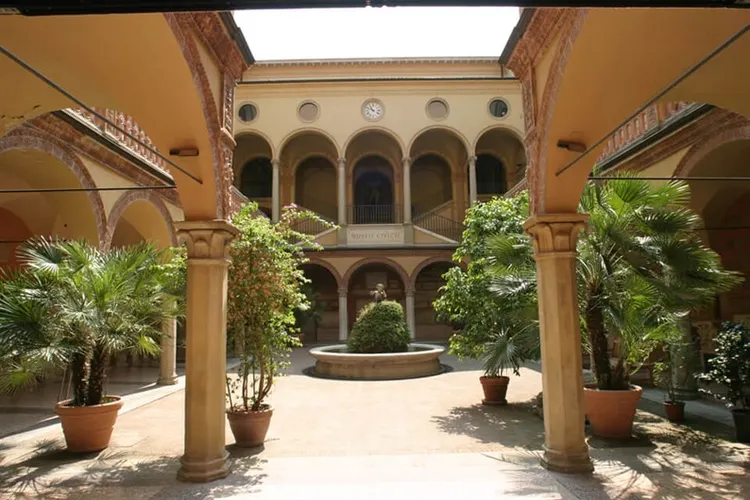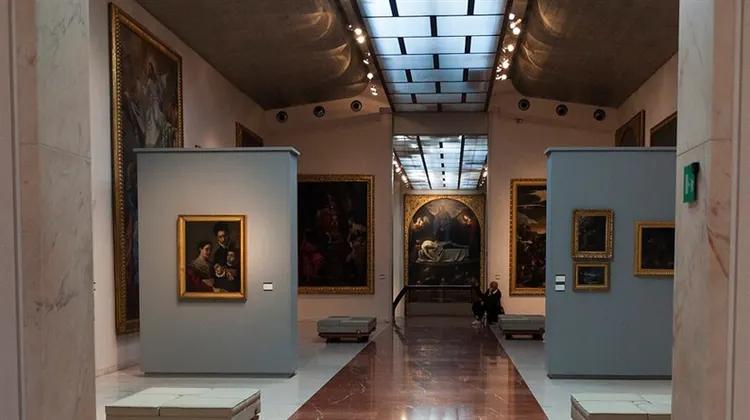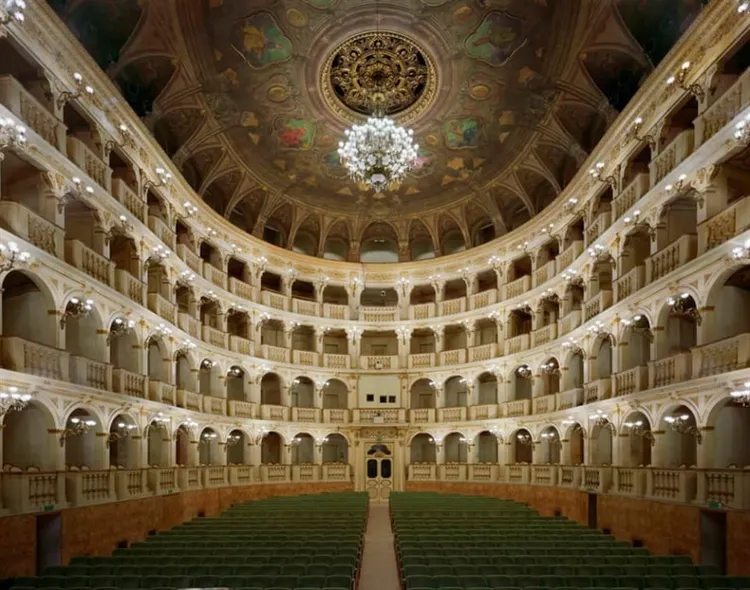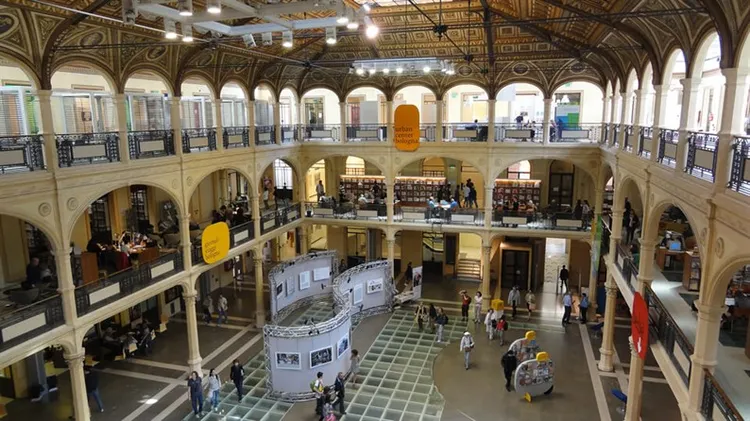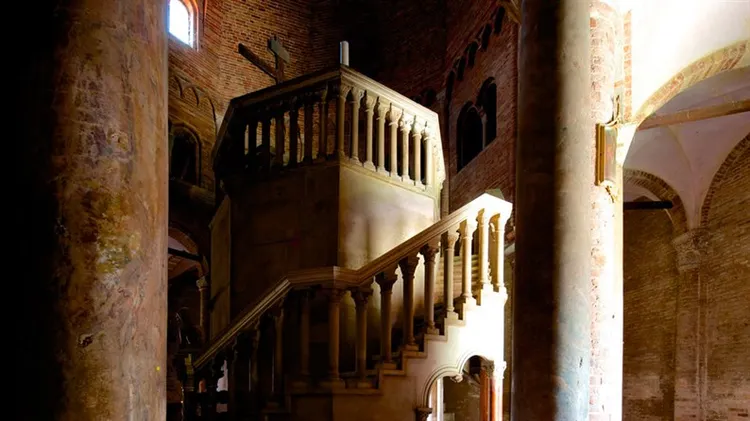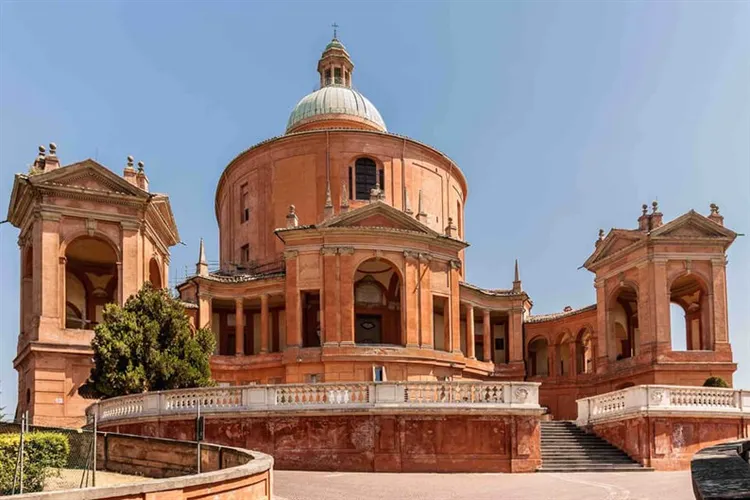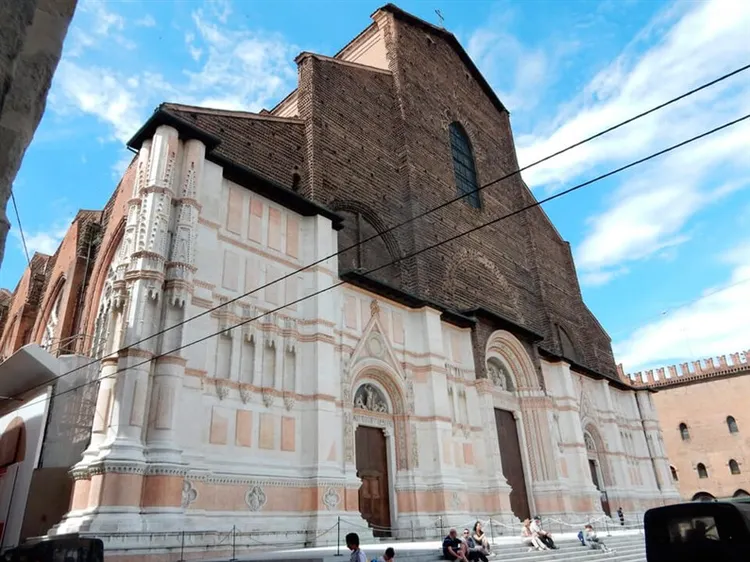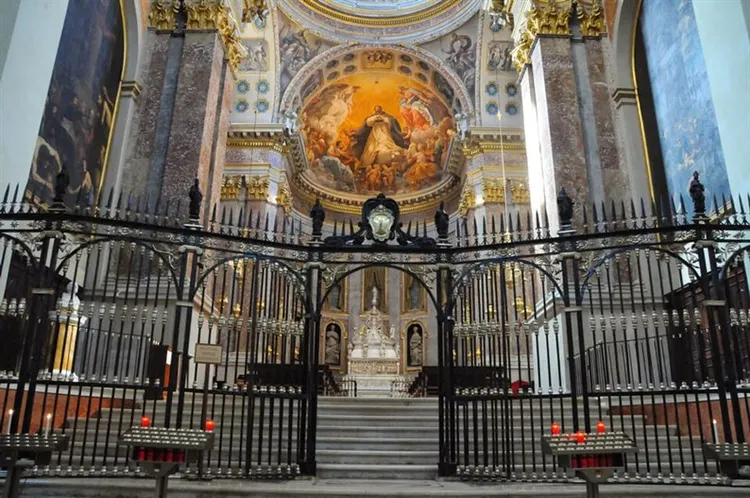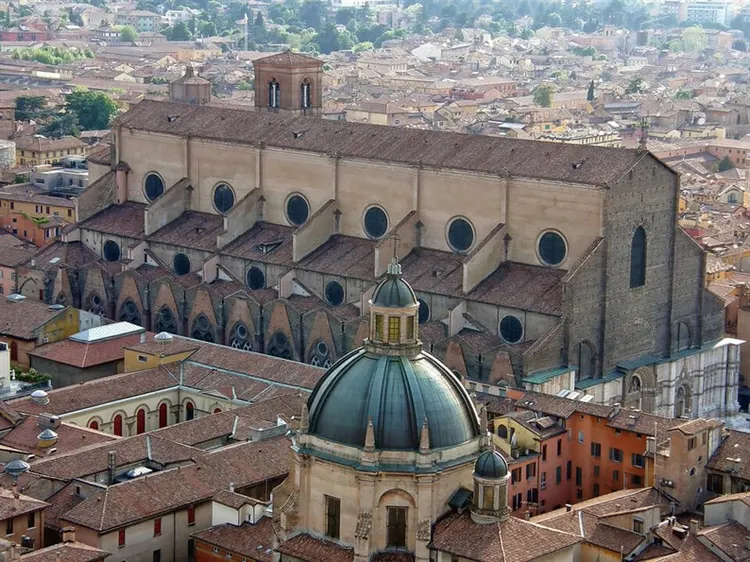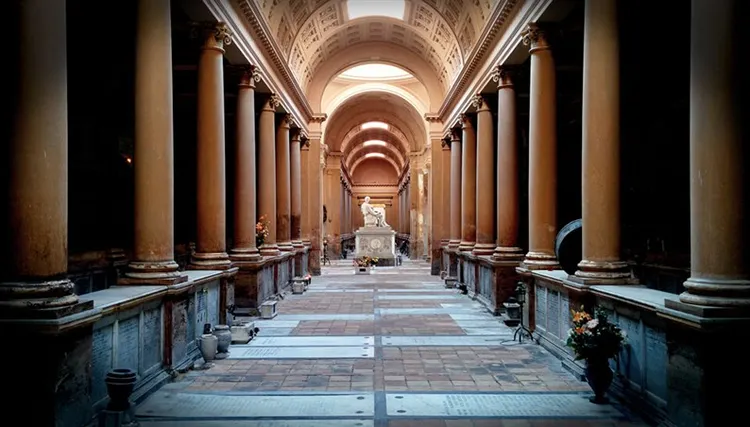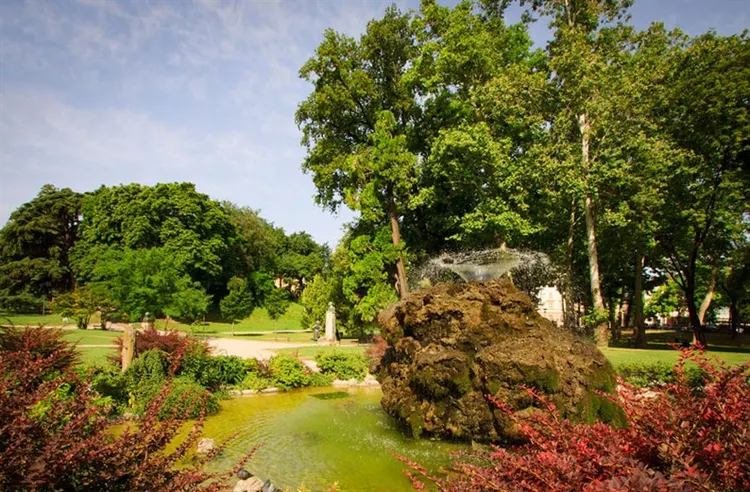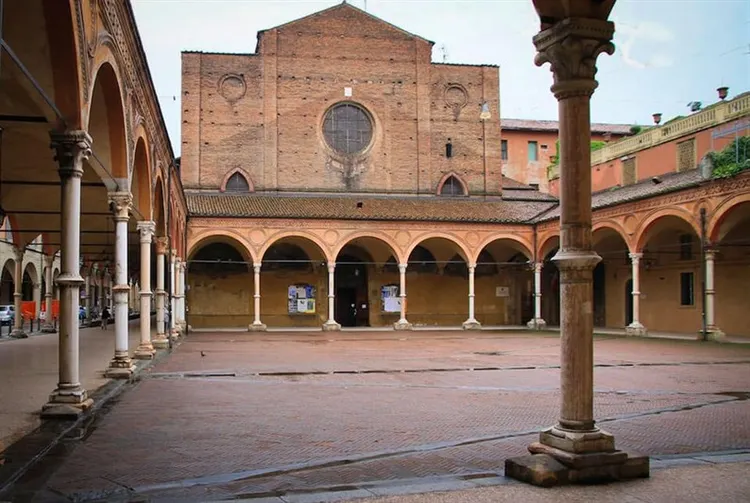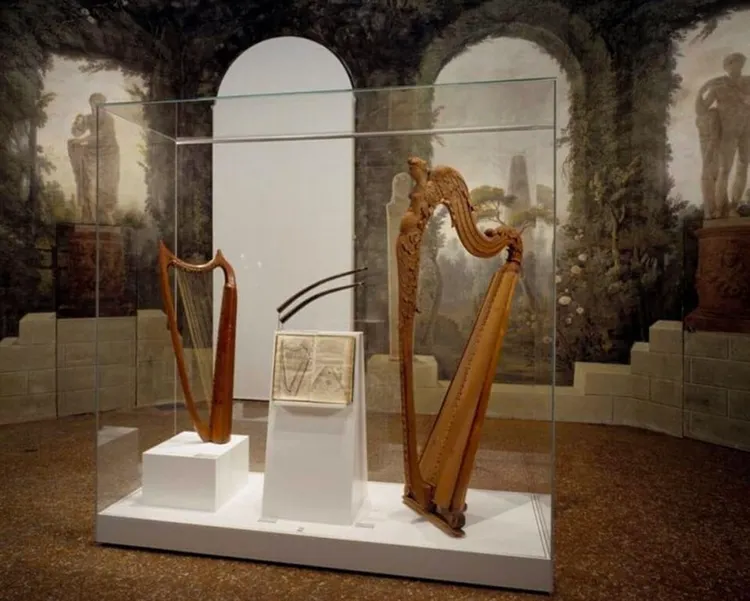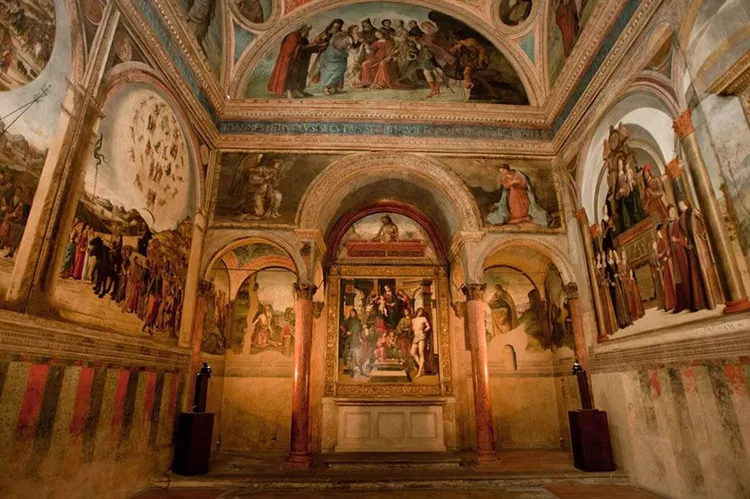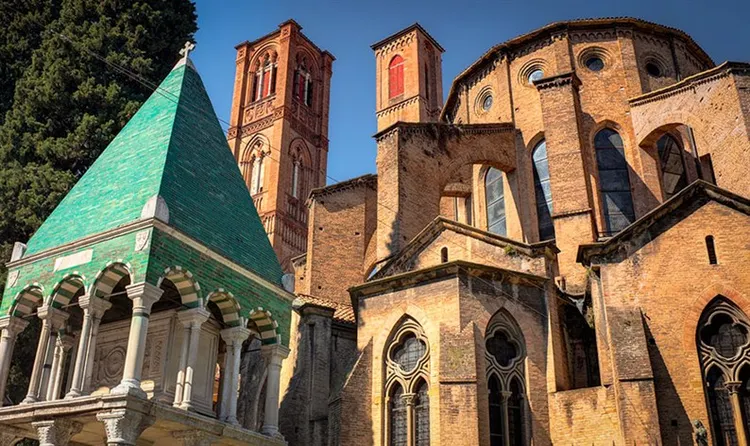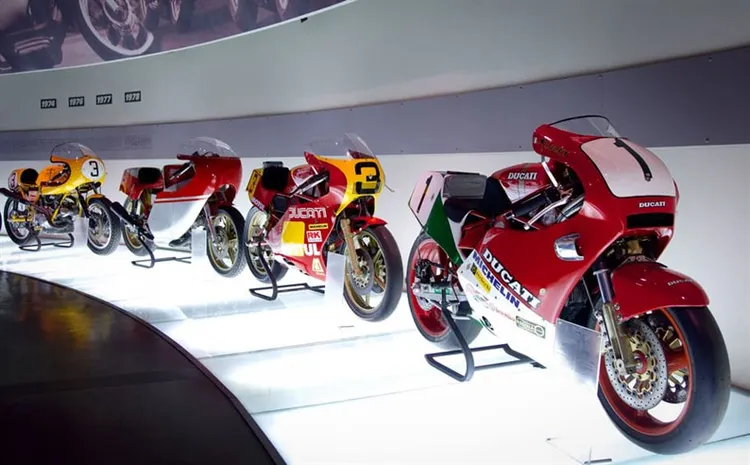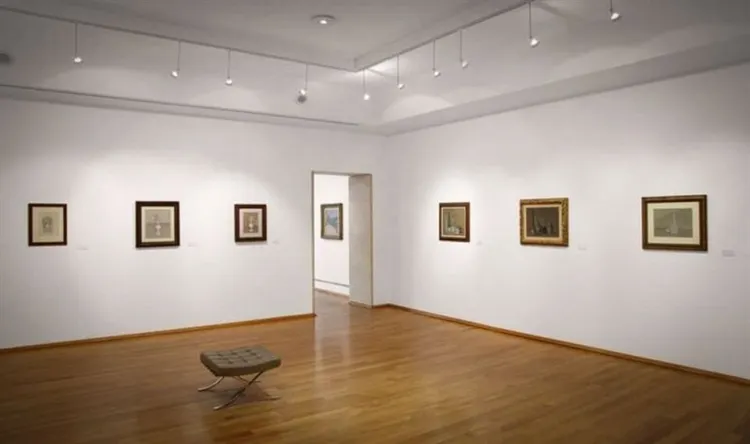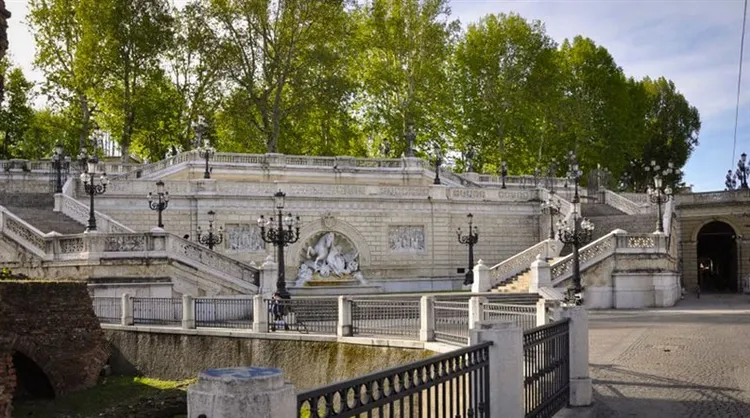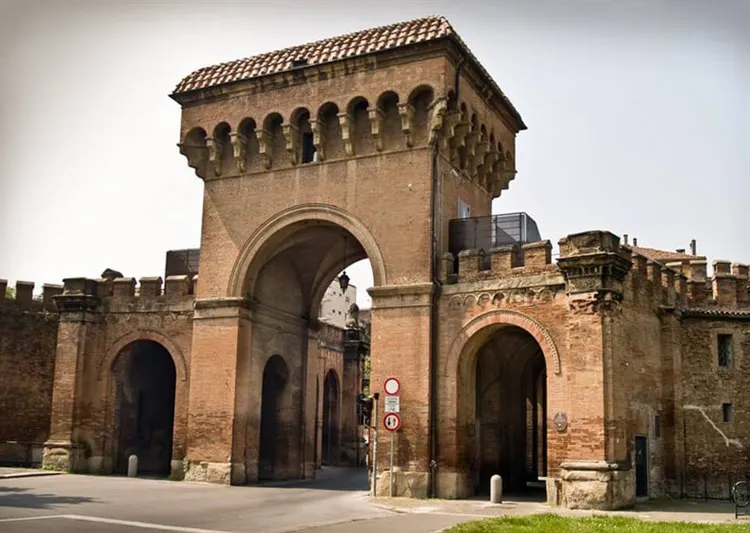Sights of Bologna – 30 most interesting places
Italy is loved by tourists from all over the world. People come here at any time of the year: the country is always interesting. Bologna is an ancient city, where historical and cultural monuments are located at every step. It has preserved many architectural sights of different times. They attract tourists for walking under the numerous arcades, admiring the towers, ancient buildings, narrow streets filled with a special atmosphere of life in ancient Italy. Ancient parks, churches, buildings fascinate with their dissimilarity to everything else. In order to examine everything in detail, it will take more than one week. In addition, the city is listed in the UNESCO catalog as a city of music. The sights of Bologna will remain in memory for a long time. Let's talk about the most popular of them.
Squares of Neptune
The appearance of the main city square became a necessity for market trade, a place for holding tournaments of knights, folk festivals. Death sentences, appeals from the authorities, new laws were read from the balcony of the Podesta Palace. The city center is formed by two adjacent squares (Piazza Maggiore and Piazza Nettuno). The last square was created at the behest of Cardinal Cesi in 1565. All the old buildings located with the Big City Square were demolished.
The first architectural decoration was the statue of Neptune, confirming the power of Pope Pius IV. The main architectural values of the ancient period of the life of the city are located on the central square. Among them are the palaces of Comunale (City Hall), Nettuno, Podesta, del Re Enzo, del Banchi, del Notan (Notaries), the ancient church of San Petronio. The modern dimensions of the square make up a rectangle with a length of 115 m and a width of about 60 m. Medieval streets, famous leaning towers, bright buildings, an ancient fountain create a special beauty and significance of the city.
The area is located in the historical center. Learn the detailed history of all buildings simply by participating in numerous excursions with a Russian-speaking guide.
Book a private transfer from the airport to your hotel for 3 378 RUB
Fountain of Neptune
The oldest fountain in Italy was built in 1563. Commissioned by Cardinal Borromeo. It was based on the ideas of engineer Lauretti, architect Lupi. The bronze sculptures of the fountain are made by Gianbologna. Symbolically, the actions of the majestic Neptune, pacifying the waves of the sea, are associated with the power of Pope Pius IV. The fountain is sometimes called the “Giant” because of its size (the height of the sculpture is 3.2 m, weight is about 2.5 tons).
The water for the amazingly woven 90 jets comes from a special aqueduct leading to the Remonda spring, located next to the monastery (its author was Lauretti). Over the five centuries of its existence, the fountain has been repeatedly repaired and updated. In 1990, he acquired the former splendor. Next to the figures of the inhabitants of the seas (sirens, cherubs, dolphins, etc.), asymmetrical bowls, there appeared tablets with the names of people involved in the creation of a magnificent architectural monument. The sculpture is located in the historical center of the city.
university palace
The exact opening date of one of the oldest universities in the world has not been exactly established. It is known that in the XI century the school of “liberal arts” worked. It taught the basics of rhetoric, Roman law (Irnerius gave his lectures here in 1088). The unique traditions of university education were laid down long ago and used to gain knowledge by great names (Copernicus, Galdoni, Dürer, etc.).
The general complex of buildings included the remains of ancient buildings located nearby and used for education. Archigymnasium (high school) gradually turned into a comfortable, complete ensemble, which became the residence of the university since 1803. The palace has two floors, a patio framed by comfortable porticos. Two wide staircases with numerous audiences lead to the second floor of the palace. Among them there are classes (a hall of literature, lawyers), decorated in an original way in the form of coats of arms belonging to the families of the best students, teachers (about 7,000 units).
The address of the university is Piazza Galvani, 1. Paid excursions to the most interesting rooms of the palace (anatomy room, library) are organized.
Archigymnasium
On the second floor of the university palace there is a room used since ancient times for the study of corpses, public autopsy. By the way, representatives of the Inquisition always watched the autopsy process through a special secret window. The building was erected in 1637, looks like an amphitheater, decorated with carved wood figures created by Antonio Levante. Among them, the “Plunged” statues, busts of Ercole Lelli of famous doctors have been preserved.
Address: Piazza Galvani, 1. The very famous physicist Luigi Galvani, who founded the doctrine of electricity. In his honor, a monument was erected on the square, indicating the path to the desired building.
Towers of Asinelli and Garisenda
In the Middle Ages, a small area of the settlement was decorated with a huge number of high-rise buildings in the form of towers (today 19 towers have survived). Most of the towers were built in the XII-XIII centuries. Two of them, standing at the intersection of roads leading to the ancient city walls, have become a symbol of modern Bologna. The name of the towers Asinelli (97 m) and Garisenda (48 m) comes from the names of noble families who lived around 1120. The tower of Asinelli was a prison, a small bastion for defensive purposes.
It was connected by a suspension bridge to the Garisend tower. Famous scientists Riccioli, Guglielmini conducted experiments in it to study the laws of rotation of the earth, the movement of solid bodies. In wartime, an observation post was located here. Now this is a unique opportunity to see the city and its surroundings. The architectural complex of the Two Towers is located at Piazza di Porta Ravegnana. You can only visit the Asinelli Tower from 9 am to 6 pm.
Palazzo Comunale
From anywhere in the city, you can see a building rising on a hill, reminiscent of an ancient fortification. It is a complex of several buildings of different times. Since its construction in 1290, the architectural masterpiece has served as the residence of the country's famous professor, Francis Accorzo (who gave the palace its second name). In it, since 1336, important meetings of the elders of the city and the administration began to be held regularly. In one of the halls of the palace (Farnese or Royal) the coronation of Charles V took place.
Now the building houses works of art by many famous masters of painting. In the art gallery you can see the painting by Piero della Francesca “The Resurrection of Christ”. Inside the palace is the Morandi Museum (opened in 1993), which houses works donated by members of the famous family. The facade of the beautiful palace is decorated with a bronze monument to a native of the city, the famous reformer Pope Gregory XIII.
Address of the Palazzo Comunale (municipality): Piazza Maggiore.
Palazzo Re Enzo
For a long time, the ancient Gothic-style palace performed the heavy functions of a prison. Among its walls, for over 20 years, the famous prisoner King of Sardinia, the son of Emperor Friedrich Enzo, languished. The Palazzo Re Enzo was built around 1246. The initial tasks of the new building were to expand the premises of the Palazzo del Podesta, required for the urban community. It was the so-called “New Palace” After the victory in the Battle of Fossalt, he began to serve as a military building. The first floor was occupied by rooms for storing weapons. Court hearings were held in the Trecento Hall (then the military archive was located there).
Now the palace has been restored, it houses an interesting Chapel of Our Lady (prisoners), cells where prisoners served their sentences, a medieval courtroom. The building has extraordinary acoustics. Above the palace rises the tower with the Campanazzo bell. Under his battle, residents of the city gathered in emergency situations. And now a flashing lamp, fixed on the corner of the palace, announces the birth of another baby.
It is located at: Piazza Maggiore 1. Paid tours of the historic center of the city are offered to explore the palace.
Palazzo Podesta
In the 1200s, representatives of the local administration were called podestas. A medieval palace was built as their residence. The elegant building has elements of the Gothic style, similar to the decoration of the Kremlin Palace. They were created by the same architect (the teeth of the bell tower have the same shape in the form of a dovetail). Over a long period of life, the elongated building of the palace was repeatedly restored, decorated with elements of the Renaissance (with the support of the Bentivoglio family). Among them are the statues of Saints Petronio, Dominic, Proculus, Francis.
At different periods of life, the palace housed the trading rows of merchants, local artisans, a courtroom (at one time the palazzo was called the Palace of Justice). Theatre, playing field, sports hall for firefighters. Now exhibitions of photographs and paintings are held in the halls of the first palace. In summer, an open-air screening of old films is organized in front of the palace.
The palace is located on Piazza Maggiore. It is easy to get to it on the bus route 29 B. You can visit the palace along with excursions at no extra charge.
Palazzo dela Mercantia
The Gothic Palace of Trade appeared on the site of the Customs building around 1390. Trade offices and corporations became the owners of the building. Disputes between merchants were resolved in courtrooms. Later, the Palace housed the Chamber of Commerce of the city (1811). Together with numerous documents, documents containing unique recipes for the cuisine of the Emily Romagna population are stored here.
The post-war destruction of the building was restored in 1949. The alleged architects of the project are members of the Marchesi family, Andrea and Giacomo. The palace is decorated with a portico with Doric columns, a frieze made up of an original geometric pattern, and medallions. The facade of the red brick building is decorated with a small snow-white balcony. Guilty verdicts were read from him. Merchants convicted of fraud were tied to a pillory for public ridicule.
Fairytale Palace is one of the most beautiful buildings in the city. Now it houses the Faculty of Law of the famous university, numerous offices. The rich interior decoration of the palace can be seen using excursion offers. The palace is located on Mercantia Square of the same name (located at the junction of Santo Stefano, Castiglione, Caprarie streets).
City Archaeological Museum
The museum began its activity in 1861 with the collection “Rooms of Antiquity”. Throughout the entire period of its existence, the exhibits of the museum were replenished with elements found during archaeological excavations in other places in Italy. Until now, there are new objects from the life of the Etruscans who lived on this place in ancient times (from the burials of the Gardens of Margaret). These are household items, jewelry, ceramics, bronze items, weapons of different historical periods. The age of some is about 700 thousand years.
The museum's collections are organized into eight thematic sections. Their inspection takes place during a short excursion. The exposition of finds from ancient Greece includes Roman copies of interesting sculptures, statues, and household items. The museum's Egyptian collection is one of the best collections in Europe (3,500 artifacts from the Ancient Kingdom of the Ptolemies). The numismatic collection is represented by 100 thousand coins, original medals, stamps.
Museum address: via dell'Archiginnasio 2. Open from 9 am to 6.30 pm.
Palazzo Poggi Museum
The building was erected for an influential, wealthy family of the middle of the 16th century. The alleged author of the building is called the architects Tibaldi, Triacini. Beautiful frescoes to decorate the palace were created by Niccolo del Abbate, Tibaldi. Since 1721, the palace was transferred to the work of the rector's office, the numerous administration of the university (it is located here and now). The Astronomical Tower and the Library were added to the building in the form of an additional extension.
Now it houses one of the most interesting museums in the city, demonstrating the amazing achievements of astronomy. Antique devices, variants of sundial, paintings, photographs of the starry sky tell in detail about the stages of development of the most interesting science of astronomy. On the lower floor of the building is the Hall of Hercules with the famous statue of the mythical hero of 1730, Angelo Pio. Nearby is an old auditorium where the poet Carducci, who received the Nobel Prize in 1906, lectured for 40 years on Italian language and literature.
Museum address: Via Zamboni, 33. Open daily from 10 am to 4 pm.
Medieval Museum
The museum building was built on the site of the ancient palace of the XV century Palazzo Gisilardi. The rich heritage of museum collections was formed on the basis of private collections of the wealthy class of Italy. The main part of the exhibits tells about the life of Bologna in the Middle Ages. Items made of ivory (with an engraving of the 12th century), bronze, glass, monumental tombstones, crosses (gilded, dating from the 8th century).
Among the rare exhibits is a 13th century jar made in Syria, Turkish arrows from the 17th century. In one of the halls there is an ancient fountain (the author of the work of the XIII century has not been established) with four figures of Atlantes. Medieval documents are considered an invaluable gift to mankind. Museum address: st. Manzoni, 4. The museum is open daily from 9 am to 5 pm.
National Pinakothek
Many churches and monasteries were closed by the French, who plundered valuable art collections. To preserve the remaining values, it was decided to place a single collection in the monastery of St. Vitaly. From this began the formation of the country's famous Pinakothek. In 1875, paintings of the XIII-XVIII centuries, ancient icons became available for viewing. A new building was built for the National Pinakothek, located next to the university.
Based on the painting collection of the Institute of Sciences, a rich collection of masterpieces created by Reni, Carraci, Crochefissi, Rafael Santi and others was formed. The structure of the art museum includes several thematic sections located in separate rooms. The main artistic value of the Pinakothek is the collection of Italian icons.
Attraction address: Via delle Belle Arti, 56. Opening hours from 9 am to 19 pm.
Opera House Comunale
The first opera performed in the hall of the Public Theater during its opening in May 1763 was the opera “Triumph of Clelia” by the composer Gluck. In the future, the works of Rossini, Bellini, Wagner, Verdi began to sound in the theater constantly, making it world famous. It is interesting that the usual form of the auditorium in the form of a horseshoe did not appear here immediately. At first it looked like the original dome. The theater is in the center. The architect of the beautiful structure (an example of architecture of the 18th century) was Antonio Galli.
For several centuries, the traditions of classical opera art have been preserved in the theater. It is still one of the most important opera stages in Europe. In one theatrical season (from November to April), about 80 opera performances and more than 300 symphony concerts are presented here. The authority and fame of the theater were born thanks to the long work of the famous conductor Toscanini.
Address of the Opera House Comunale: Via Ottorino Respighi, 1. Tickets to visit must be booked in advance.
Library of Salabors
It seems that ancient Bologna is filled with the voices of students, the rustling of the pages of mysterious books. Large and small libraries have always been here. Books were collected, kept in the walls of ancient monasteries, cathedrals, in private collections of wealthy families in Italy. The continuation of these traditions was the opening of the multimedia city library of Salabors in 2001. In one modern complex, the wealth of different eras, accessible to any person, has united.
Even the smallest visitors (possibly in strollers) can become happy users of the national treasure. They have a separate entrance to their Main Hall of the Library. Comfortable workplaces, searching for the necessary information, using the Internet, relaxing in cozy cafes attract local residents and visitors here. Interesting literary evenings, meetings with poets and writers are often organized in the cafe. There are halls where schoolchildren can learn lessons and listen to music.
The library is located in the Accursio Palace (former stock exchange hall). Address: Piazza del Nettune, 3.
Santo Stefano
The architectural complex, consisting of four surviving churches, is the idea of Bishop Petronius about the revival of holy places. At this place in ancient times there was a pagan temple of the goddess Isis. The ensemble was named “Seven Churches”. After a series of unsuccessful restorations, the following churches survived:
Attraction address: Piazza Stefano. Works from 9 am to 20.30 pm.
Madonna di San Luca
Not far from the historic center of the city, on Sentry Hill, is the sanctuary of the Madonna di San Luca. The image of the Virgin Mary with the Child, created by St. Luke, is kept in this church. For many hundreds of years, it has been an element of pilgrimage for numerous believers in Italy and other countries. There is a legend about how, in the 12th century, a hermit brought the icon to this place, where the foundation of the first church in the region was laid. Many interesting deeds that saved the city are associated with the help of the Virgin Mary.
The sanctuary where it was kept has been designated a national monument since 1874. To enter this holy place, one must use the passage through a long, covered gallery, called the portico, along which 15 chapels are built. The longest passage in the world begins (its length is 3.5 km, it consists of 666 arches) for the procession of believers from the church of St. Petronius through the gates of Saragozza. The number of arches is related to the myth that the devil was crushed under the foot of the Virgin Mary.
Basilica of San Petronio
The main church of the city is considered the fifth largest church in the world. It is named after the holy bishop Petronio, who lived in Bolgna in the 5th century. The size of the church (length 132m, width 60m, height 52m) can accommodate 28,000 people. The construction of the building under the direction of the architect Antonio Vicenzo began in 1390. It went on for several centuries. Music has always played an important role in the city. The activities of the church also reflected this side of the center of musical life.
The first musical instruments for the church appeared here in the 17th century. The melodies of two amazing old organs still sound within the walls of the ancient basilica. The church housed the working rooms of the medieval astronomer Cassini. Now here you can see the longest meridional line of sundial in the world. Due to its location, the most accurate measurements of the past time were made here.
Reconstructions, building additions took place in the church in modern times. In 1954 the majestic Cathedral was consecrated. The relics of St. Petronio from the Basilica of Santo Stefano were transferred to it. Just like in 1530, when the coronation of Charles V took place here, or in the 19th century the burial of Napoleon's sister, the basilica is the decoration of the city, its main iconic place. Church address: Piazza Maggiore.
Basilica of San Domenico
There are churches in honor of St. Domenic in many places on the planet. But it all started from this place in Bologna, where the preacher Domenic Guzman came back in 1218. The small church of Mascarella could not accommodate a large number of believers who came to listen to revelations and sermons. Having moved to the church of San Nicolo, which stood on the outskirts of the city, Domenica soon died and was buried there. In its place, a huge church gradually grew, named after the holy preacher.
The main chapel of the basilica was the chapel of Domenic. Under its dome, the remains of the Saint are kept. The area in front of the basilica is decorated with his sculpture. Well-known masters of Italy worked on the design of the facade, internal halls, and the bell tower. Mozart performed his immortal works on an ancient organ. Address of the Basilica: Piazza S. Domenico, 13. You can visit the Basilica taking into account the passage of church events.
Cathedral of Saint Peter
The decision to build a cathedral was made in 1184 on the site of a burned-out church of early Christianity. The facade of the consecrated cathedral is decorated with two large figures of the apostles Peter and Paul. The majestic bell tower of the cathedral was erected nearby. The status of the metropolitan church received in 1582. The interior of the cathedral is made in the Baroque style. Among the elements of decoration, the sculptural groups “Crucifixion with the Mother of God and John the Evangelist” (it is made of wood) and “Lamentation of Christ” by Albfonso Lombardi (circa 1527) are of great value.
The bowls with the saint are supported by marble lions, preserved from the 12th century. There are four bells in the cathedral, for which original methods of ringing were invented. It is run by 23 bell ringers. The cathedral houses a unique treasury. This is a museum with religious objects from the XV-XX centuries. Cathedral address: Via Independenza, 7. Open daily from 9 am to 8 pm. Free admission. Tourists are not allowed to visit during services.
Certosa Cemetery
Walking through the ancient cemetery, you can discover many interesting facts about the life of people of different classes who created the history of the place. The Cemetery of Certoza has long been an open-air museum, creating a special atmosphere, introducing interesting architectural monuments that stand above the graves. Moreover, archaeological excavations have confirmed the existence of an ancient Etruscan cemetery here. All together this is a powerful energy of the history of the city, the people.
The structure of the cemetery, founded on the outskirts of the city in 1801, is made with numerous arcades, sculptural monuments, extravagant monuments, family crypts, private chapels created by famous masters. Now it is the most famous cemetery in Europe. It has a columbarium, a Jewish cemetery, a mass grave of those who died in the battles of the world war. This is a unique architectural and artistic ensemble. Many famous politicians, artists, laureates of various awards are buried here. Byron, Stendhal, Dickens and other famous names walked along it.
Attraction address: Via della Certosa, 18.
Margarita Gardens
This park was designed by the Count of Sambuye. The city council acted as the customer. The work was carried out in record time (everything took about 2 months), and then the municipality approved the project. The city bought the land to implement the idea of Count Sambuie from the wealthy landowner Tattini.
The park received its first visitors 5 years after the start of design. And the first name (Margherita Passage) was given in honor of Queen Margherita, the wife of Umberto 1. By the way, it was this talented lady who participated in the creation of the pizza recipe, also named after her.
Margarita Gardens is a place where you can get acquainted with ancient finds discovered during the work:
- The most famous is the Etruscan necropolis. The time of its appearance is 6-5 centuries BC. The excavations were carried out successively by Gozzani and Brizio. The most valuable find is the sandstone stele, which shows the stages of a person's journey to the land of the dead.
- The Villanov hut has been reconstructed to give visitors an idea of the life of the people of that era.
- In front of the gates of Castiglione, a pavement of cobblestones was laid. True, it was discovered outside the garden, and transported here on purpose.
Today, gardens are an area intended not only for walking. Here, citizens who are tired of the monotonous everyday life of the city can get closer to nature. The organizers have created greenhouses where anyone can try themselves as a gardener and grow vegetables or herbs.
Basilica of Santa Maria dei Servi
This temple was built for Servites in the 14th century. Customers – Order of the Virgin Mary. The author and original executor of the project is Andrea da Faenza. But the architect failed to complete his ideas, so another architect completed the work in the 15th century. The façade of the basilica is quite simple: the walls are made of bricks, there is no plaster. And the church itself is quite small: 100x20m. The cross section resembles a Catholic cross.
But inside it's a masterpiece:
- Vitale da Bologna murals dating back to the 14th century have been preserved here.
- And the marble altar was made by Montorsoli himself, who was called Michelangelo Montorsoli
- The face of the Virgin Mary on the throne was sculpted by Cimabue
- Until now, an ancient organ plays in the basilica. Connoisseurs consider it the best in Europe
The courtyard of the temple, built in the 16th century, occupied all the free territories around. The vestibule consists of 5 arches. The courtyard is very beautiful in December: there is a Christmas market organized by the church council. Tourists can buy souvenirs, toys and sweets. Gingerbread and Christmas decorations are hand-painted. Donations are collected for poor citizens.
International Music Museum
This center contributed to the fact that Bologna was included in the UNESCO catalog as a city of music. Unique documents are stored here that describe not only the ways of playing ancient instruments, but also the possibilities of restoration. It is these sources that have helped some instruments retain their appearance and musicality.
Visitors can see:
The basis of the collection was the collection of Martini. Giovanni Battista is a monk, composer and music historian. The most famous composers of the era: Bach, Handel, Gluck sent their portraits to Martini. They considered it an honor to have their images in Martini's collection. By the way, Giovanni Battista helped Wolfgang Amadeus Mozart prepare for the exam. In gratitude for this, Mozart's father sent a portrait of his son.
In the Martini collection, a version of the young Mozart's examination paper with Martini's corrections has been preserved. The museum is located in the former Sanguinetti Palace, built in the 16th century. And Palagi, Barozzi, Martinelli and Basoli worked on the interiors.
San Giacomo Maggiore
The monks of the Order of Saint Augustine organized the monastery in the first half of the 13th century. And soon the church of San Giacomo Maggiore was built. She has survived to this day. The monastery prospered: this was helped by the support of the noblest and richest families of the city. The interiors of the church of San Giacomo Maggiore, the work of the famous Francia, Costa and Aspertini, have survived to this day.
Then the time of oblivion began: this was the result of the wars waged by Napoleon Bonaparte. The monastery was closed, and part of the premises became the property of the Conservatory. But some outbuildings managed to be preserved at the church. Chaplains continued to serve in the temple. In the 16th century, the church of San Giacomo Maggiore needed reconstruction: the building was damaged by lightning. But subsequent alterations: replacing the original windows with large square ones, adding plaster flowerpots to the interior, plastering the walls, turned out to be unsuccessful.
As a result, the original interiors were lost. Tourists can also visit the Bentivoglio Chapel. Once Anton Galeazzo Bentivoglio was buried here, and then turned into a family crypt. The room has a separate dome, and the interiors were painted by Costa. Here are unique bas-reliefs and sculptures that Francha worked on.
Basilica of San Francesco
This is an active temple belonging to the Roman Catholic Church. It began to be built in 1236 and completed after more than 100 years. The work was controlled (at a certain stage) by Pope Innocent 4. And he was in charge of everything, first Brescia, and then Fra Giovanni. The remains of early buildings were used as foundations.
The stone walls are not decorated with marble slabs: this is how the traditions of the orders of mendicant monks are observed. The interior layout resembles that of Notre Dame de Paris. The marble altar, the author of which is Jacobello and Mazenier, has been preserved. At the end of the 18th century, persecution of the monasteries began. In order to save the basilica, it was transferred to civil departments: barracks were located here, then customs. But in the middle of the 19th century it was returned to the church.
At the beginning of the 20th century, the Franciscan order restored the cathedral. During World War II, the basilica was damaged by bombing. But after liberation, it was restored again. Today, tourists can see the majestic cathedral from the inside and out, admire the original interiors and appreciate the bizarre mixture of Romanesque, Gothic and early Renaissance styles.
Ducati Museum
In 1926, the Ducati brothers decided to open a small business. It was planned to produce spare parts for radio receivers. But life made adjustments: the plant began to design and manufacture sports motorcycles and bicycles. The enterprise worked so successfully that the family decided to create an exposition. It presents author's models and replicas of models that have won tournaments. The opening took place in 2016, but for a narrow circle of people – participants in the annual week of the company. Ordinary visitors were able to see the models only in September.
A separate booth is dedicated to the designers who created the models and the riders who tested the models. Exhibited drawings, working documents. Tourists got access to production: visits to several workshops are open. And next to the exposition, a pavilion was built where a cafe is located, a souvenir shop is open and you can leave outerwear in the cloakroom.
Giorgio Morandi Museum
The sister of the famous graphic artist, Maria Teresa Morandi, helped organize the exposition. She made a generous donation. From 1993 to 2001 the center was headed by Marilena Pasquale. It was the heyday of the museum.
After Marilena left the post of director, the collection was divided into 3 parts. One remained in its original place, the second moved to the Museum of Modern Art. The third – became part of the exhibition in the house-museum of the artist.
This affected the perception of Morandi's work by visitors. The unification and return of the collection was helped by the elements: after the devastating earthquake of 2012, it became difficult to select undamaged buildings for the exhibition. Works were again under one roof. The permanent exhibition presents 85 works from the 214 available at the centre.
Works are grouped by topics:
- landscapes.
- Poetics of the object. Morandi wrote these works as an already established person. Giorgio's last still life is on display in the hall.
- Engraving. This room displays the canvases that made Morandi famous.
- Time and composition. The section shows the master's ability to convey the atmosphere through the selection of parts of objects.
- Out of genre. Here exhibited not the usual paintings for Morandi.
On a special stand there is information about where and when the expositions of Morandi took place.
Gardens of Montagnola
For the first park of Bologna, a 60-meter artificial hill was adapted, which was poured for the construction of the palace. The first vacationers began to walk in 1662. Ornamental trees have been planted instead of wild trees, flowerbeds have been laid out and paths have been designed. Couples and young people walked here, carriages drove. It has become a tradition to hold meetings in a cozy garden.
Later, the park was improved:
Unfortunately, today the state of Montagnola Park saddens tourists. The pond is drained, and the marvelous statues are covered with a net. The marble staircase in the evening and at night attracts the outcasts. The paths are lighted occasionally.
But in the park, centuries-old trees have been preserved, a playground has been arranged, and a kindergarten for kids is working. Dog owners walk their pets in an equipped place. Citizens willingly spend hot days here.
Gate of Saragozza
This is all that remains of the fortress wall, which encircled the city in the 13th century. In the 17th century, a gallery that was supposed to connect the entrance to the place where the icon of the Virgin Mary was kept. The icon was painted by the Evangelist Luke. After the construction was completed, the pilgrims began to call the gates of Saragozza the Holy Gates. In the 19th century, the building was reconstructed by the architects Rodatti and Mengoni.
They widened the passage (it became possible to pass through the gate on modern transport), added round turrets and a portico. Soon, a horse-drawn route passed through the renovated passage, connecting Bologna, Casalecchio and Vignola. But today the gates of Saragozza are also famous for the fact that the headquarters of the informal society was located here. In 1912, the gay parade of the city started from here.
